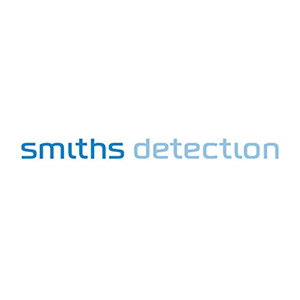Smiths Detection - Experts & Thought Leaders
Latest Smiths Detection news & announcements
inter airport Southeast Asia, the premier trade exhibition and conference for airport innovation and technology in Asia, will return to Singapore from 25 to 27 March 2025 at the Marina Bay Sands. The 8th edition is expected to bring together over 3,500 representatives of the aviation industry in Asia, influencers in the airports and airlines community, and 150+ exhibitors, including world-class solution providers and airport equipment suppliers, to connect, find synergies, build partnerships, and innovate. Groundbreaking innovations As the aviation industry advances and new airport projects and investments surge globally, groundbreaking innovations are essential to drive its transformation. Themed “Airport Operations for Tomorrow” conversations at the exhibition and conference will highlight innovation, technology, and sustainable solutions to optimise terminal and ramp operations of the future. Asia driving majority in airport projects APAC now boasts 575 existing or new airport projects, valued at a staggering USD 488 billion With visitor arrivals projected to reach 564 million in the Asia Pacific, the region is now positioned at the forefront of significant airport development, pioneering the global aviation recovery. APAC currently boasts 575 existing or new airport projects, valued at a staggering USD 488 billion, while the investment at existing airports amounts to 170 projects, valued at USD 217 billion. Construction of new airports “Thailand is one of the high growths in emerging aviation market in Asia-Pacific. The passenger volume is expected to double by 2032, and Thailand will be one of the top 10 markets in total passenger traffic by 2042." "To manage the increased passenger capacity, AOT developed a strategic master plan that includes the construction of new airports, expansion of existing facilities, and upgrades to key infrastructure to enhance capacity to accommodate 240 million annual passengers (MAP) by 2032,” said Latchida Apaphant, EVP, Foreign Affair, Airports of Thailand PLC (AOT). Complexity of airport operations Apaphant added: “To make Thailand a regional aviation hub, and a goal to bring Suvarnabhumi International Airport rank among the top airport operators by 2037, massive investments are also be made to procure automated technology and biometric identification system to reduce international passenger processing times." "Given the increasing complexity of airport operations and the need to innovate, inter airport Southeast Asia conference offers timely discussions and an exhibition to explore emerging technologies for the future of airports.” C-suite speakers Ms Latchida will join some of the C-suite speakers confirmed at inter airport Southeast Asia conference: Ricia Montejo, Head, Customer Experience, Aboitiz GMR-Megawide Cebu Airport Corporation Ibrahim Mohd Salleh, Chief Operating Officer, Aerodarat Services Sdn Bhd - a wholly owned subsidiary of Malaysia Aviation Group Lye Teck Tan, EVP, Safety & Security, Changi Airport Group Saurabh Dalvi, Head of Operations, Mumbai, Goa, Hyderabad, Celebi Nas Musdalifa Abdullah, CEO, GTR Malaysia Megat Ardian, Senior General Manager, Strategy, Malaysia Airports Raymond Lo, CEO, Menzies CNAC Aviation Services Ltd Simon Lotter, Head of Market for Asia & Pacific, Munich Airport International Tatsuya Izumi, Deputy General Manager, Narita International Airport Corporation Ranjiv Ramanathan, SVP, SG Hub Transformation & Development, SATS Ltd Brad Moore, CEO APAC, Swissport International AG Innovative approaches According to Airports Council International (ACI), global passenger volume is foreseen to reach 9.5 billion in 2024, while the Asia-Pacific region is said to lead in year-on-year (YoY) growth in 2024, with a 13% increase, reaching 3.4 billion passengers by year-end. With air travel playing a vital role in global trade and tourism, the sector must adopt innovative approaches to make airport more sustainable and resilient. Global and regional solutions inter airport Southeast Asia 2025 will highlight global and regional solutions that support the scaling up inter airport Southeast Asia 2025 will highlight global and regional solutions that support the scaling up of airport tech to boost operation efficiency and greener solutions in ground operations to reduce carbon emissions. Prominent exhibitors on the exhibition front include ADB Safegate, Alstef Group, BSLBatt, Charlatte Manutention – FAYAT Group, Dynell GmbH, ElectroAir, Fastcharge GSE, ITW GSE, JBT AeroTech, Runway Safe Group, Roypow, Smith Detection, TLD Asia Ltd, Weihai Guangtai Airport Equipment, just to name a few. Advancements in GSE technology “Ground support equipment is a critical component of driving airport operations, and the advancements in GSE technology are paramount for driving sustainability and efficiency. By embracing advanced GSE technologies, such as electric and autonomous vehicles, we can reduce emissions and improve operational efficiency, all while enhancing safety." "It’s important to discuss how we can reimagine ground handling operations to establish new benchmarks in turnaround efficiency, and I’m excited to discuss this with fellow panellists at the upcoming inter airport SEA,” said Brad Moore, CEO – APAC, Swissport. Focus on innovation and safety Japan pavilion will also be showcased for the first time at inter airport Southeast Asia Japan pavilion will also be showcased for the first time at inter airport Southeast Asia. The pavilion will present a dynamic line-up of companies, including NEC, Japan Radio Co., Ltd (JRC), RION, ShinMaywa Industries, Ltd., Sugie Seito Co., Ltd., and Toyota Industries Corporation as they showcase cutting-edge airport equipment for ground operation and touchless technology to enhance airport experiences. In line with the industry's focus on innovation and safety, Singapore is also taking steps to advance aerospace manufacturing standards. New standard: SS 708 AM for aviation A Working Group on Additive Manufacturing for Aerospace Manufacturing, established under the Singapore Standards Council, will launch a new standard: SS 708 Additive Manufacturing (AM) for Aviation – Filament Layer Manufacturing (FLM) Process Specifications. The standard seeks to establish a comprehensive framework for FLM parts producers supplying to the aerospace industry, covering process control and qualification of hardware, facility, materials, and operations. New industry entrants The standardisation of terminology and processes will also facilitate procurement officers of FLM parts to better evaluate new industry entrants to the FLM supply chain, ultimately contributing to enhanced safety in both commercial and military aircraft operations. More details will be made available at the event in March. All registered professionals for inter airport Southeast Asia 2025 will be granted free access to both the exhibition and conference floors. For the latest information on inter airport Southeast Asia.
Smiths Detection, a pioneer in threat detection and security screening technologies, and a business of Smiths Group, announces that its state-of-the-art IONSCAN 600 detectors will be tested by the Polish railway, PKP Group. The six-month pilot, the first in Poland, will help develop standards for future anti-terrorism and anti-sabotage systems, strengthening the protection of critical infrastructure. The equipment was loaned by the Directorate General for Home Affairs and Migration (DG HOME) of the European Commission, which initiated the project. Develop security practices The IONSCAN 600 detectors will be used to assess and develop security practices for the railway system, with a particular focus on strengthening anti-terrorism and anti-sabotage measures. These detectors, which use scanning strips to identify explosives and hazardous substances, will be used in random screenings of baggage and cargo at selected train stations, on trains, and at cargo terminals. The goal is to implement security protocols similar to those already in place at airports, ensuring comprehensive protection of critical infrastructure. Workshop held at Warszawa Central station Live demonstrations of the IONSCAN 600’s capabilities took place at key locations To kick off the initiative, a workshop was held at Warszawa Central station, attended by representatives from the European Commission, Smiths Detection, the Polish Police, Border Guard, Railway Security Services, and PKP Group. Live demonstrations of the IONSCAN 600’s capabilities took place at key locations, including PKP Intercity trains and the PKP CARGO Connect terminal, showcasing the effectiveness of the detectors in real-world scenarios. Shaping future security standards The European Commission and Smiths Detection will use the test to provide valuable insights to refine operational requirements for the use of these devices in the railway environment. The results will contribute to the Commission's efforts to establish standardised security protocols for railway systems across Europe. These findings will also help define the future development of anti-terrorism and anti-sabotage technologies tailored for the rail sector. Poland becomes the sixth country to test this technology as part of the EU’s wider railway security initiative, following similar trials in the Netherlands, Belgium, Germany, Slovakia, and Romania. The operational feedback from these tests will be instrumental in shaping future security practices and devices for the rail industry. Enhancing border security In addition to its railway testing, the IONSCAN 600 detectors will also be deployed by the Polish Border Guard at key border crossings with Ukraine and Belarus. These devices are capable of detecting both explosives and dangerous chemical substances and can identify whether an individual has come into contact with these materials or with weapons. This capability is particularly important in securing the EU’s external borders. Identifying security threats This initiative aims to expand the use of advanced threat detection technologies beyond aviation The IONSCAN 600 testing in Poland is part of the European Commission’s broader Counter-Terrorism Plan (CT Agenda), launched in 2020 to strengthen the security of public infrastructure across the EU. This project is part of a series of ongoing detection trials aimed at developing balanced security solutions in collaboration with manufacturers, operators, and law enforcement, addressing both facilitation and security concerns. This initiative aims to expand the use of advanced threat detection technologies beyond aviation, with a focus on harmonising standards for the protection of public spaces. The programme also supports the voluntary adoption of EU-wide standards for detection equipment, ensuring that technologies like the IONSCAN 600 are effective at identifying security threats while enabling the free movement of people and goods. Rail safety standards Matthew Clark, VP Commercial, Smiths Detection, said of this initiative: "This pilot programme is a vital step toward enhancing rail safety standards, which are essential in today’s evolving threat landscape. By testing the IONSCAN 600 in real-world rail environments, we’re not only expanding the applications of our technology beyond aviation, but also helping shape the future of security for critical infrastructure across Europe." He adds, "Our commitment is to provide reliable, cutting-edge solutions that safeguard public spaces, and this project is a testament to that vision." European Commission’s Counter-Terrorism Plan The European Commission’s Counter-Terrorism Plan is part of an ongoing effort to bolster the EU's overall security posture. In 2019, the EU Railway Safety Platform adopted a set of best practices for rail safety, including the use of mobile detection devices for random and targeted checks. These initiatives are designed to address emerging threats and create a more secure and resilient Europe.
Smiths Detection, a global pioneer in threat detection and security screening technologies, and a business of Smiths Group plc, announces the launch of the SDX 6040 Enhanced Image Quality (EIQ), a cutting-edge screening solution designed to meet the dynamic demands of modern security environments. SDX 6040 The SDX 6040 offers the best image quality on the market, ensuring unparalleled clarity when detecting threats. Unlike fixed screening equipment, the SDX 6040 is highly mobile, allowing it to be moved and powered up easily. It is an ideal solution for critical infrastructure, urban security and both public and private sector environments where high levels of safety and operational efficiency are paramount. Adaptable solution for security SDX 6040 is light with a narrow 80 cm footprint, allowing for rapid relocation to any site. The SDX 6040 is lightweight with a narrow 80 cm footprint, allowing for rapid relocation to any site. The touch screen provides an easier and faster way for users to interact with the system for greater accessibility. The SDX 6040 can also be used with other Smiths Detection and partner technologies, including people screening and the trace detection of narcotics or explosives, making it a comprehensive and adaptable solution for security needs. Enhanced detection with greater versatility The SDX 6040’s powerful 160kV generator delivers exceptional X-ray image quality, which enables operators to quickly and accurately identify potential threats, significantly reducing the risk of misinterpretation. The system’s smart image display, equipped with features like organic stripping and enhancement modes, provides superior discrimination between organic and inorganic materials—critical for the precise detection of explosives, drugs, and other contraband. Redesigned detection system An optimised background contrast function reduces eye strain, allowing operators to maintain high vigilance during prolonged use. The redesigned detection system ensures a totally comprehensive view of every item, eliminating any blind spots. Additionally, the solution is compatible with iCMORE, our AI technology, offering automated threat detection for a wide range of prohibited items. Ensuring public security in a world of risk SDX 6040 is a high-performance key for busy urban climates that are targets for security threats The SDX 6040 is a compact and high-performance solution for busy urban environments that are often targets for security threats such as power plants, transport networks, government and corporate buildings, visitor attractions, prisons, cruise ships, sports arenas/venues, and world heritage sites. This type of technology will be crucial in detecting and preventing threats such as terrorism, violent crime, and narcotics smuggling. Broader implications Dr. Philo Daniel, Global Aviation and Urban Security Director at Smiths Detection, said of the launch: “At Smiths Detection, our mission is to make the world a safer place." "We know that urban environments are increasingly tackling threats from groups and individuals. Ensuring their safety has broader implications for the public, national security, and economic stability." Unparalleled detection capabilities "The SDX 6040 has been designed to offer superior image interpretation in a compact solution, providing unparalleled detection capabilities while integrating into high-traffic areas." "This technology ensures rapid, accurate screening, empowering security personnel to respond to potential threats in order to enhance the protection of critical infrastructure and public spaces.”
Insights & Opinions from thought leaders at Smiths Detection
Technology is expanding passenger screening functions and other capabilities at airport security checkpoints. For example, Smiths Detection is exploring the concept of a security checkpoint that integrates biometric identity management with screening solutions, says Richard Thompson, Global Market Director Aviation, Smiths Detection. Biometrics is the “unique identifier’” for passengers, and through integration of biometrics directly into the checkpoint, passengers can be matched with their luggage trays to enable real-time risk-based screening (RBS). The system is now able to trigger differentiated workflows for each passenger and their bags. Risk-based screening Risk-based screening optimises security operator resources through enhanced screening of passengers who represent a higher risk, while passengers deemed to be low risk enjoy a more seamless journey.Passengers deemed to be low risk enjoy a more seamless journey Easily integrated with existing infrastructure, biometric checkpoints deliver operational efficiencies and a competitive advantage to airports through accelerating the screening process, thus enabling a more seamless free flow of passengers. Passenger and tray identification Through passenger and tray identification, new data insights can also be gathered to inform decision-making. Advanced data analysis based on flights, airlines or destinations could be utilised by airlines and security authorities. For example, airlines could monitor passenger flow through security for specific flights or track the number of trays per flight to predict overhead compartment capacity. Checkpoint data could also be combined with hold luggage screening results or shared with transit and arrival airports to better inform security assessments. Advanced data analysis based on flights, airlines or destinations could be utilised by airlines and security authorities Advanced screening of carry-on baggage Smiths Detection’s HI-SCAN 6040 CTiX offers advanced screening of carry-on baggage using Computed Tomography (CT), an advanced X-ray technology originally intended for medical applications, which allows for detailed, layered 3D images to be rotated and dissected. Electronic devices and liquids do not need to be removed from baggageThis enables detailed detection, meaning electronic devices and liquids do not need to be removed from baggage, thus expediting screening and further improving the passenger journey. Smith Detection’s iLane.evo is an automatic tray return system. By delivering a steady flow of trays, it plays a critical role in streamlining the screening process and delivering increased throughput; optimised operational costs; and an improved passenger experience. AI for object recognition In other trends, the use of artificial intelligence (AI) in aviation security is on the rise due to the exponential growth in computing power. It has the potential to significantly boost the performance of screening equipment – allowing for the deployment of new object recognition functions at the checkpoint, which could pave the way for a more automated, alarm-resolution-only passenger screening. Smiths Detection has developed a family of smart algorithms, called iCMORE, which use machine learning to reliably detect prohibited or dangerous goods in baggage, including weapons, to reduce the burden on image analysts and improve screening outcomes.
Palm vein recognition
DownloadThe key to unlocking K12 school safety grants
DownloadPhysical access control
Download5 surprising findings from OT vulnerability assessments
DownloadHoneywell GARD USB threat report 2024
Download



















